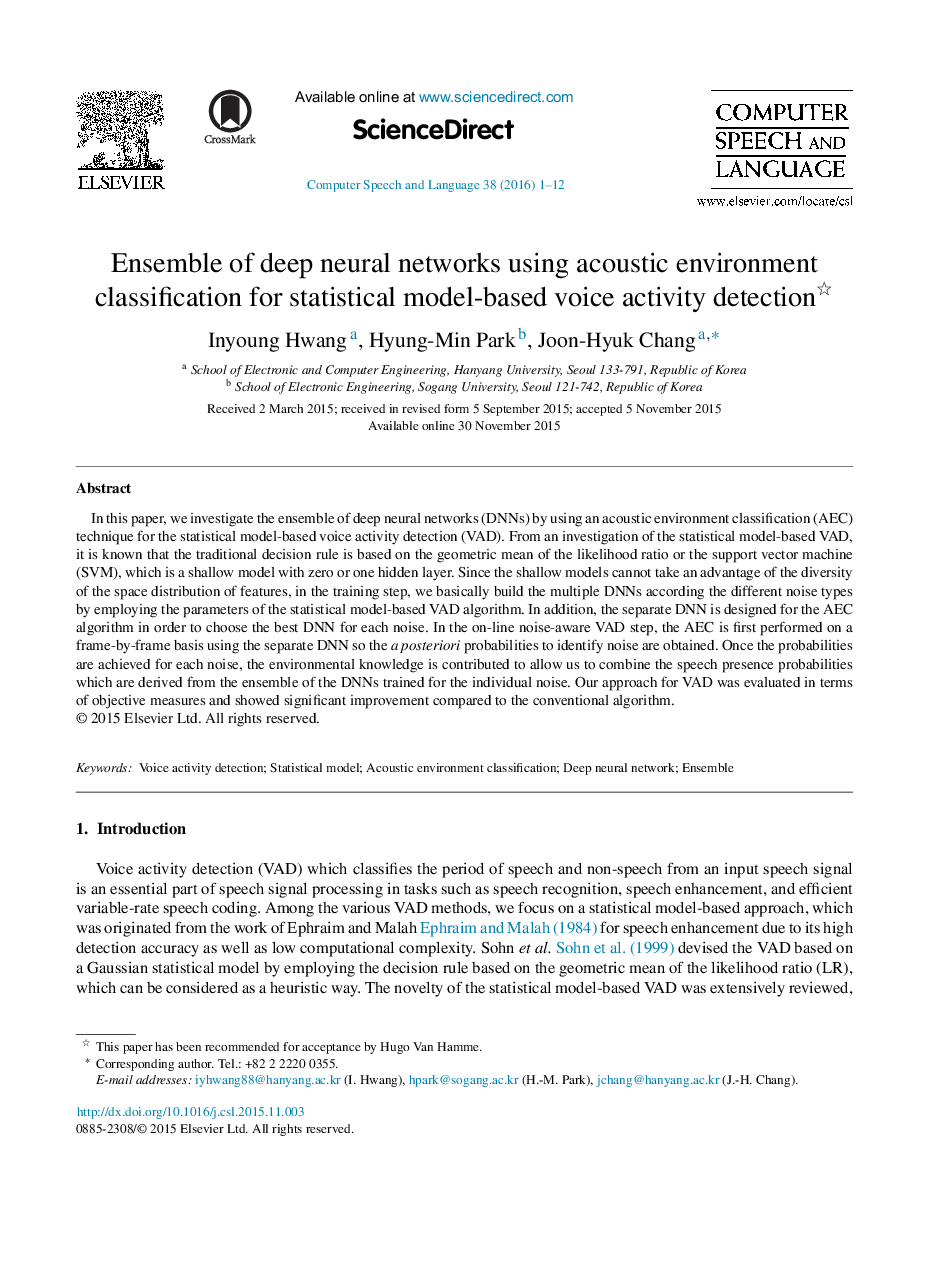| Article ID | Journal | Published Year | Pages | File Type |
|---|---|---|---|---|
| 558198 | Computer Speech & Language | 2016 | 12 Pages |
•We develop the voice activity detection based on statistical model.•The DNNs are used for the voice activity detection.•Ensemble of the DNN is devised for different noise environments.•A separate DNN is built to detect the current environment.
In this paper, we investigate the ensemble of deep neural networks (DNNs) by using an acoustic environment classification (AEC) technique for the statistical model-based voice activity detection (VAD). From an investigation of the statistical model-based VAD, it is known that the traditional decision rule is based on the geometric mean of the likelihood ratio or the support vector machine (SVM), which is a shallow model with zero or one hidden layer. Since the shallow models cannot take an advantage of the diversity of the space distribution of features, in the training step, we basically build the multiple DNNs according the different noise types by employing the parameters of the statistical model-based VAD algorithm. In addition, the separate DNN is designed for the AEC algorithm in order to choose the best DNN for each noise. In the on-line noise-aware VAD step, the AEC is first performed on a frame-by-frame basis using the separate DNN so the a posteriori probabilities to identify noise are obtained. Once the probabilities are achieved for each noise, the environmental knowledge is contributed to allow us to combine the speech presence probabilities which are derived from the ensemble of the DNNs trained for the individual noise. Our approach for VAD was evaluated in terms of objective measures and showed significant improvement compared to the conventional algorithm.
